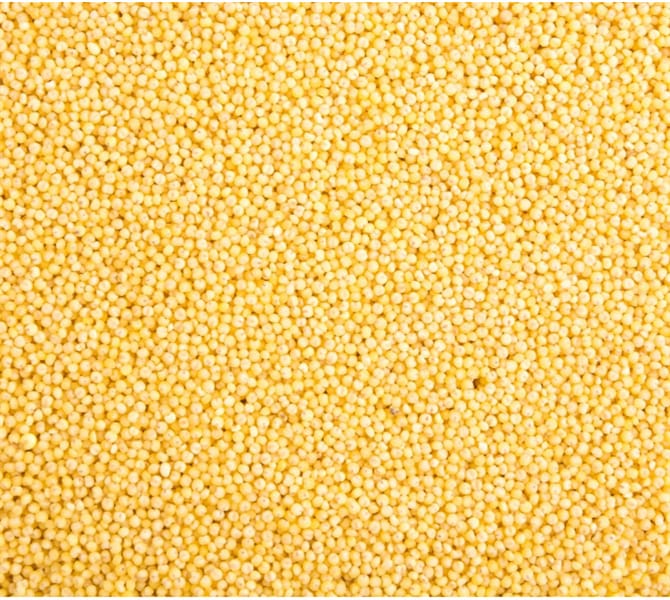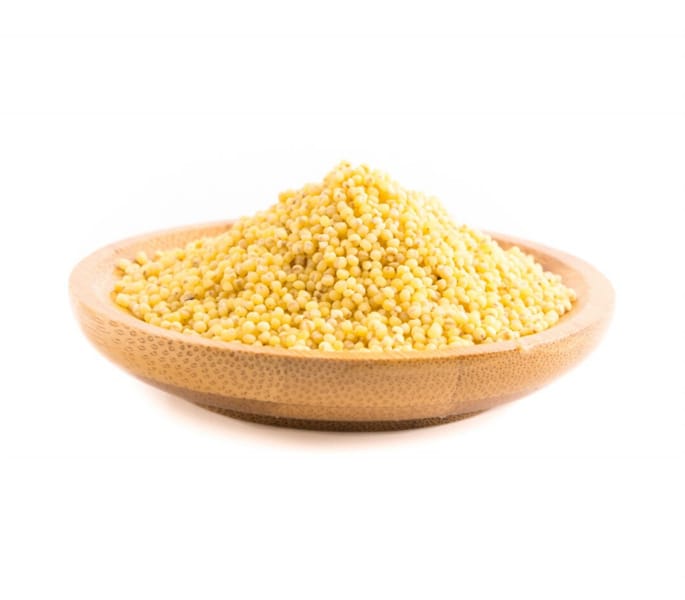Introduction: A Journey into the Golden Fields of China Millet
For over five millennia, a humble grain has graced the tables of China, nourishing generations with its versatility and remarkable nutritional profile. This ancient grain, millet, is experiencing a global resurgence, captivating health-conscious consumers and innovative food producers alike. This exploration delves into the world of China millet, uncovering its journey from ancient fields to modern markets and revealing its potential to elevate culinary experiences and contribute to a healthier future.
Unveiling the Essence: Understanding China Millet
What is China Millet?
China millet encompasses several species of small-seeded grasses cultivated primarily for their edible seeds. Unlike true wheat, millet is naturally gluten-free, making it an attractive alternative for individuals with gluten sensitivities. Key varieties grown in China include:
- Foxtail Millet (Setaria italica): The most common type, prized for its mild, slightly sweet flavor and quick cooking time.
- Proso Millet (Panicum miliaceum): Known for its slightly nutty flavor and yellow color, often used in porridge and as birdseed.
- Finger Millet (Eleusine coracana): A highly nutritious variety with a slightly earthy flavor, popular in southern India and parts of Africa.

Cultivation and Processing: A Tapestry of Tradition and Modernity
China’s diverse agricultural landscape provides ideal conditions for cultivating various millet varieties. Key production regions include:
- Inner Mongolia: Known for its vast grasslands, where proso millet thrives in the cool, dry climate.
- Hebei Province: A major producer of foxtail millet, benefiting from fertile soil and favorable weather conditions.
- Shanxi Province: Known for its high-quality millet, often processed into flour for noodles and steamed buns.
Chinese farmers have cultivated millet for centuries, blending traditional practices with modern advancements:
- Drought Tolerance: Millet’s resilience to drought conditions makes it a valuable crop in arid and semi-arid regions, contributing to food security.
- Minimal Inputs: This hardy grain requires minimal fertilizers and pesticides, aligning with sustainable agricultural practices.
- Harvesting and Processing: Once the millet plants mature, the seeds are harvested, threshed to remove the outer husks, and then cleaned. Further processing yields various forms:
- Whole Grain Millet: The intact grain, retaining its bran layer and germ, offering maximum nutritional value.
- Hulled Millet: The outer husk is removed, resulting in a quicker cooking time and milder flavor.
- Millet Flour: Ground from whole or hulled millet, used in baking gluten-free bread, pancakes, and other culinary creations.
China Millet Product Information: A Comparative Glance
| Product | Type | Attributes | Features | Specifications | Size | Grade | Standards |
|---|---|---|---|---|---|---|---|
| Whole Grain Foxtail Millet | Unhulled | Mild, Slightly Sweet Flavor; Chewy Texture | Excellent Source of Fiber and Minerals; Versatile Ingredient | Moisture: Max 14%; Impurities: Max 1% | 2-3 mm diameter | Grade A | ISO 9001; HACCP |
| Hulled Proso Millet | Hulled | Nutty Flavor; Soft Texture | Quick Cooking Time; Suitable for Porridge and Side Dishes | Moisture: Max 12%; Broken Grains: Max 3% | 2-3 mm diameter | Grade A | ISO 9001; HACCP |
| Finger Millet Flour | Ground from Whole Grain | Earthy Flavor; Slightly Bitter Aftertaste | Rich in Calcium and Iron; Used in Gluten-Free Baking | Protein: Min 7%; Gluten: Not Detectable | N/A | Grade A | ISO 22000; BRC Certified |
Table Description: This table provides a concise overview of different China millet products, highlighting their key attributes, features, specifications, and certifications. This information empowers buyers to make informed decisions based on their specific product requirements and quality expectations.
Applications: Exploring the Culinary Tapestry of China Millet
- A Culinary Journey Through Asia:
- Chinese Millet Congee: A comforting and nourishing breakfast porridge, often served with sweet or savory toppings.
- Indian Ragi Dosa: Crispy, savory pancakes made from finger millet flour, a staple in South Indian cuisine.
- Japanese Millet Gohan: Millet cooked with rice, adding a nutty flavor and chewy texture to this staple dish.
- Global Culinary Innovations:
- Gluten-Free Baking: Millet flour’s gluten-free nature makes it ideal for baking bread, muffins, cookies, and other treats.
- Salads and Grain Bowls: Adding a delightful crunch and nutty flavor to salads, grain bowls, or as a side dish to grilled meats or fish.
- Plant-Based Burgers and Patties: Millet’s binding properties and neutral flavor make it a suitable ingredient in vegetarian and vegan burgers and patties.
- Beyond the Plate:
- Millet-Based Beverages: Used in the production of non-alcoholic beverages, such as fermented drinks and plant-based milk alternatives.
- Animal Feed: Millet grains are a valuable source of nutrition in poultry and livestock feed.
Comparing China Millet Suppliers: Navigating the Global Market
| Supplier | Location | Price Range (USD/Metric Ton – as of November 2023) | Specialties |
|---|---|---|---|
| CAIE | Global | Contact for pricing,Absolute low price! | Premium quality China millet sourcing; expertise in navigating the Chinese market; customized solutions for diverse needs; reliable supply chain and logistics; focus on sustainability and ethical sourcing. |
| Inner Mongolia Grain Group | Inner Mongolia, China | $450 – $650 (Proso Millet) | Leading supplier of proso millet from Inner Mongolia; known for its large-scale production capabilities and competitive pricing. |
| Hebei Jingu Agricultural Products Co., Ltd. | Hebei, China | $500 – $700 (Foxtail Millet) | Specialized supplier of high-quality foxtail millet from Hebei province; known for its traditional processing methods and commitment to quality. |
Advantages and Limitations: A Balanced Perspective on China Millet
| Advantages | Limitations |
|---|---|
| Gluten-Free and Nutrient-Rich: Naturally gluten-free and a good source of fiber, protein, magnesium, phosphorus, and antioxidants, making it a healthy and versatile ingredient. | Cooking Time: Some millet varieties, particularly whole grain, require a longer cooking time compared to refined grains like white rice. |
| Sustainable Crop: Requires minimal water and inputs like fertilizers and pesticides, making it an environmentally friendly choice. | Flavor Profile: While generally mild and slightly nutty, some individuals might find the flavor of certain millet varieties too bland or earthy. |
| Culinary Versatility: Can be enjoyed as a whole grain, hulled grain, flour, or used in various culinary applications, from sweet to savory dishes. | Availability: While increasingly popular, certain millet varieties might not be as readily available as other grains in some regions. |
Table Description: This table presents a balanced view of the advantages and limitations associated with sourcing China millet. It highlights the benefits of its gluten-free nature, nutritional value, and culinary versatility, while acknowledging potential challenges related to cooking time, flavor preferences, and availability.

Beyond the Basics: Intriguing Insights into China Millet
- Historical Significance: Millet has been a staple in Chinese agriculture and cuisine for over 5,000 years, deeply intertwined with the country’s cultural heritage and culinary traditions.
- Health Benefits: Rich in magnesium, a mineral crucial for heart health, blood sugar control, and nerve function, millet is gaining recognition for its potential health benefits.
- Sustainable Future: As concerns about climate change and food security intensify, millet’s drought tolerance and minimal input requirements position it as a sustainable crop for the future.
Why Choose CAIE as Your Trusted China Millet Sourcing Partner?
At CAIE, we are passionate about connecting global businesses with the exceptional quality and value of China millet. Here’s why we are your ideal sourcing ally:
- Unwavering Quality Commitment: We source our millet from trusted growers in China who adhere to stringent quality and safety standards, ensuring you receive only the finest products.
- Tailored Sourcing Solutions: We recognize that every business has unique needs. We offer flexible order sizes and customized solutions to meet your specific requirements for millet products.
- Reliable Supply Chain, Uninterrupted Operations: Our well-established supply chain and robust logistics network ensure a consistent and timely supply of millet products, enabling you to meet your production demands without interruption.
- Competitive Pricing, Exceptional Value: We leverage our strong relationships with growers and our efficient operations to offer competitive pricing without compromising on the quality of our products.
- Dedicated Support, Every Step of the Way: Our team of experts is dedicated to providing exceptional customer service, guiding you through every step of the sourcing process, from initial inquiry to final delivery.
- Online shopping: wholesale high quality chinese millet
We believe in forging long-term partnerships built on trust, transparency, and mutual success. Contact CAIE today to discuss your China millet sourcing needs and discover how we can empower your business to thrive.
Frequently Asked Questions: Addressing Your B2B Sourcing Needs
Q1: What is the typical lead time for CAIE’s millet products?
A1: Lead times vary depending on the order volume, product type, and destination. Generally, lead times range from 2 to 4 weeks from order confirmation to delivery. We work closely with our clients to provide accurate lead time estimates and ensure timely delivery.
Q2: Does CAIE offer non-GMO China millet options?
A2: Yes, we understand the importance of non-GMO products for many businesses. We work with growers who are committed to non-GMO farming practices and can provide documentation to support non-GMO claims.
Q3: Can CAIE assist with product blending and packaging customization for private label brands?
A3: Absolutely! We offer private label services, including blending different millet varieties or incorporating millet with other grains, and packaging customization. We can work with your design specifications and brand guidelines to create packaging solutions that align with your brand identity and target market preferences.
Q4: What quality control measures are in place to ensure the safety and quality of CAIE’s millet products?
A4: We have rigorous quality control procedures in place throughout our supply chain, from sourcing to packaging. This includes supplier audits, product inspections, laboratory testing for factors like moisture content, impurities, and microbial contamination, and strict adherence to international food safety standards such as HACCP and ISO 22000.
Q5: How does CAIE ensure ethical sourcing practices within its millet supply chain?
A5: We are committed to ethical sourcing and social responsibility. We partner with growers who share our values and adhere to fair labor practices, safe working conditions, and environmental sustainability. We conduct regular supplier assessments to ensure compliance with our ethical sourcing standards and promote transparency within our supply chain.
